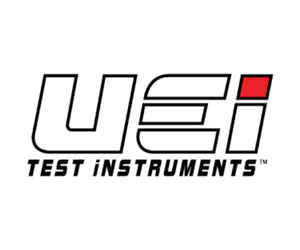BACK
 Why the Sauna Feels Hotter When You Throw Water on the Rocks
Why the Sauna Feels Hotter When You Throw Water on the Rocks
 Silicon Carbide vs. Silicon Nitride Hot Surface Ignitors (HSIs)
Silicon Carbide vs. Silicon Nitride Hot Surface Ignitors (HSIs)
 The Many Uses of Thermal Imaging Cameras in HVAC
The Many Uses of Thermal Imaging Cameras in HVAC
 Replacing an Evaporator Coil
Replacing an Evaporator Coil
 Different Ignitor Types and How They Work
Different Ignitor Types and How They Work
 The VOCs Lurking Under Your Customers’ Sinks (and In Many Other Spots)
The VOCs Lurking Under Your Customers’ Sinks (and In Many Other Spots)
 Another Ob-NOx-ious Combustion Product
Another Ob-NOx-ious Combustion Product
 How to Replace a Condensing Fan Motor
How to Replace a Condensing Fan Motor
 Design and Performance Challenges of Air-Source Heat Pumps Across Diverse Climatic Conditions
Design and Performance Challenges of Air-Source Heat Pumps Across Diverse Climatic Conditions
 Tech Support Highs and Woes w/ Roman
Tech Support Highs and Woes w/ Roman
 The Current War – Tesla, Edison & Westinghouse – Short #266
The Current War – Tesla, Edison & Westinghouse – Short #266
 An R-454B Ramble w/ Elliot
An R-454B Ramble w/ Elliot
 Psychrometrics and the Magic Line – Short #265
Psychrometrics and the Magic Line – Short #265
 Learning Hydronics, Boilers and Steam w/ Ray Wohlfarth
Learning Hydronics, Boilers and Steam w/ Ray Wohlfarth
 How Duct Tape Got Its Name (and Why It Shouldn’t Be on Ducts) – Short #264
How Duct Tape Got Its Name (and Why It Shouldn’t Be on Ducts) – Short #264
 The Art of De-Escalation
The Art of De-Escalation
 Legionnaires’ Disease: The Cooling Tower Killer – Halloween Short #263
Legionnaires’ Disease: The Cooling Tower Killer – Halloween Short #263
 Group Training – What We Have Learned
Group Training – What We Have Learned
#hvac
Tech Tips:

I admit it, I'm a sauna guy now. The ones at the gym are pretty gross, so I got a small one at home because I guess I’ve missed sitting in attics or something. If you’ve ever sat in a traditional sauna, you know the drill: the heat’s already intense, and then you or someone […]
Read more

The ignitor of a furnace (or a gas pool heater or other gas-fired appliance) is the heat source, and it can come in one of four varieties: standing pilot, direct spark (DS), intermittent spark (ISI), and hot surface (HSI). We have a tech tip explaining each of these ignitor types in detail, but we’re going […]
Read more

When most of us think about tools of the trade, a few main ones come to mind: manifold, multimeter, vacuum pumps, recovery machines… the list goes on. One that may NOT come up nearly as often as it probably should is the thermal imaging camera. A few symposiums ago, Bill Spohn and Eric “Elk” Kaiser […]
Read more

Evaporator coil leaks are a fact of life in the industry. (We could have a long and lively discussion about how evap coils aren’t made like they used to be, but that’s for another day.) When you have an evaporator leak on a system, you’ll have two choices to fix the problem: replace the coil […]
Read more

In the furnace sequence of operation, the ignition sequence happens after the safeties have been checked, the inducer fan comes on, and the pressure switch closes. The ignition sequence begins with the ignitor. This part provides the heat needed for combustion (remember: a fire needs heat, oxygen, and fuel), and the ignition process looks a […]
Read more

In HVAC, we have a few infamous indoor air quality monsters that bring terror to our customers’ homes—gases, particles, and organisms that wreak havoc on indoor air quality (and may contribute to moderate to severe health problems). The big one is carbon monoxide (CO), which we all know is deadly. Although not deadly by itself, […]
Read more

As we do fall maintenance and head into the heating season, combustion analysis becomes a big deal. (It’s always kind of a big deal, but now it’s a really big deal.) First and foremost, it tells us how much carbon monoxide (CO) is produced by burning. CO can make people ill, contribute to cognitive deterioration […]
Read more

Service calls about condensing fan motor failure are quite common. Even though fan motor replacement is a standard procedure for residential split systems, it requires careful attention to safety and detail. This article will give you a step-by-step guide showing how to replace a condensing fan motor. Along the way, we will also explain a few […]
Read more

This tech tip was inspired by Alex Meaney and Ed Janowiak’s session at NCI’s High-Performance Summit 2025: “Good Design Isn’t a Buffet: The Importance and Interconnection of Manuals J, S, and D.” Alex is a building science expert who worked at Wrightsoft (now MiTek) for several years before launching his consulting firm, Mean HVAC Consulting […]
Read more
Videos:
Podcasts:

In this candid and comprehensive episode, Bryan sits down with Roman to tackle one of the most frustrating yet crucial aspects of the HVAC industry: technical support. What starts as a conversation about their own tech support nightmares quickly evolves into a deep dive examining the entire ecosystem—from manufacturers and distributors to technicians and […]
Read more

In this short podcast episode, Bryan is back for yet another history lesson. This time, the subject is the current war with Tesla, Edison, and Westinghouse. The current war was fought in the late 1800s with lightbulbs, electrocutions, and a World's Fair that dazzled the entire world. Edison didn't necessarily invent the lightbulb, but […]
Read more

In this raw and unfiltered episode, Bryan sits down with Elliot, a senior service tech and newly minted install supervisor, to discuss the realities of working with R-454B refrigerant in the field. What starts as a technical discussion about the new A2L refrigerant quickly evolves into a candid conversation about industry frustrations, manufacturer accountability, […]
Read more

In this short podcast episode, Bryan talks about psychrometrics and the magic line inside a messy-looking chart. The psychrometric chart is a key tool for understanding the relationship between air and water. “Psychrometric” comes from the Greek roots for “cold” and “measurement.” As such, a tool called the psychrometer (with paired wet-bulb and dry-bulb […]
Read more

In this episode of the HVAC School podcast, Bryan sits down with Ray Wohlfarth, a seasoned HVAC contractor and prolific author who has dedicated over 30 years to mastering the art and science of boiler systems. What began as a competitive disadvantage—competitors claiming he knew nothing about boilers—became Ray's driving passion. Through daily reading, […]
Read more

In this short podcast episode, Bryan explains how duct tape got its name and why it shouldn't actually be used on ducts. Duct tape is a versatile home DIY-fix tool, but despite its name, it wasn't initially made to seal ducts at all. In 1943, we were in the thick of World War II, […]
Read more

In this comprehensive discussion, Bryan and Bert tackle one of the most critical yet underdeveloped skills in the trades: conflict resolution and de-escalation. They argue that poor conflict management is one of the primary reasons technicians lose jobs, damage team dynamics, and limit their career advancement. The conversation explores both customer-facing conflicts and internal […]
Read more

In this spooky Halloween short podcast episode, Bryan tells the story of the cooling tower killer: Legionnaires' disease. In the summer of 1976, the nation celebrated its bicentennial anniversary. The American Legion was holding its 58th annual convention at the Bellevue Stratford Hotel in Philadelphia, PA. In the days following the convention, doctors in […]
Read more

In this episode of the HVAC School podcast, Bryan Orr sits down with Bert and Leanna to discuss Kalos's first official cohort apprenticeship program, dubbed the “Launch Program.” What started as Bryan's persistent idea—one that the team initially resisted as too expensive and logistically challenging—evolved into a transformative three-month training experience that brought 15 […]
Read more



























